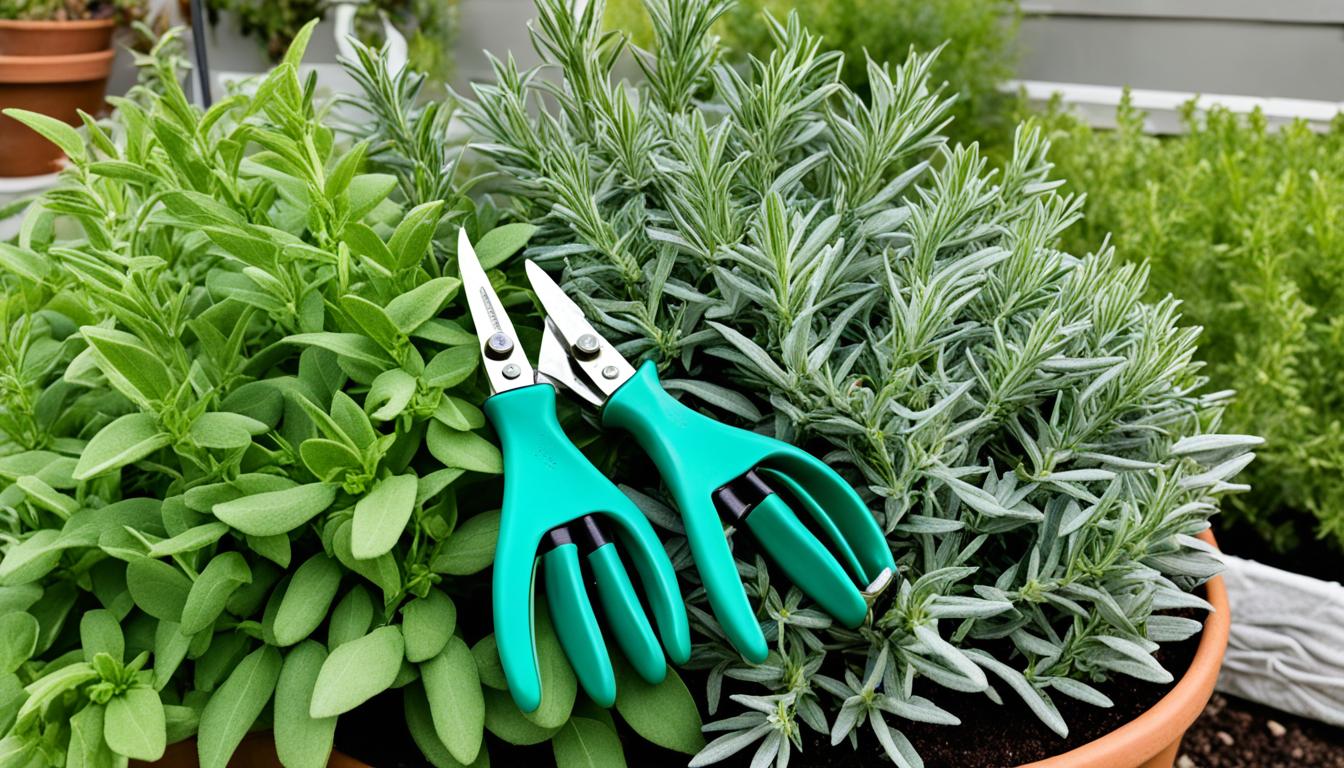Right now, 90 yards of loam are being spread across my community garden’s 30 plots. Culinary sage loves the hot sun and does well with other Mediterranean perennials. It’s best to prune sage in early spring, just when new growth starts to appear.
This lets you easily spot dead branches and cut them out first. Pruning in early spring keeps the plant healthy and encourages new growth.
For common sage, the best times to prune are early spring and late summer to early fall. Use sharp, clean bypass pruning shears to cut just above nodes. This helps the plant heal quickly and grow new leaves.
Before and after cutting, disinfect your tools with rubbing alcohol or bleach to stop diseases from spreading. Keeping your pruning shears sharp also prevents leaf damage and lowers disease risk.
Introduction
I love gardening and have learned a lot about pruning my sage plants. Sage is a valuable herb that belongs to the Salvia family. It’s used in cooking, medicine, and for its scent. But, many gardeners don’t know how important it is to prune sage.
Pruning sage is key to its health and growth. By trimming it, you help it grow strong, improve its smell, and prevent diseases. This keeps the plant healthy and gives you lots of herbs every year.
Pruning sage has many benefits. It keeps the plant looking good and helps it grow in the shape you want. It also makes the leaves taste and smell better, which is great for cooking and making scented items.
So, why prune sage? It’s to keep it healthy and full of life. With a little care, your sage plants will give you lots of delicious herbs and lovely scents for many years.
“Pruning sage is not just a chore, but an act of love and care for your garden. It’s a way to nurture and guide your plants towards their best possible form and function.”
When to Prune Sage
Pruning your sage plants at the right time is key. The best time is early spring, when the frost is melting and new growth starts. This is when you should trim your sage to help it grow well.
Later in summer or early fall, after it stops flowering, is another good time to prune. Pruning too late can make your sage weak against winter diseases. It’s important not to prune in the cold months when the plant is dormant.
This way, you help your sage stay healthy and productive for many years.
Here’s a quick guide on the best time to prune sage:
- Early spring (after the last frost): This is the prime time to give your sage a good trim, encouraging fresh, healthy growth.
- Late summer to early fall (after flowering): A light pruning at this time can tidy up the plant and prepare it for the cooler months.
- Avoid pruning in winter: Sage is dormant during this time, and pruning can weaken the plant and leave it vulnerable to diseases.
By following this sage pruning schedule, you can keep your plants looking their best. Remember, a little bit of timely pruning can go a long way in maintaining the health and vibrance of your sage.
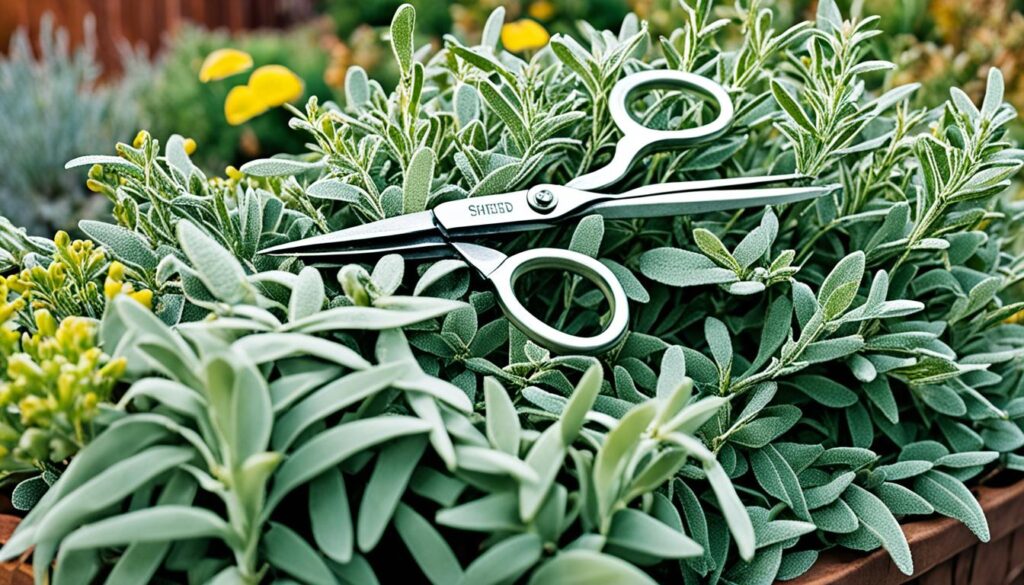
Preparing for Pruning
Tools and Techniques
Pruning your Common Sage is easy with the right tools. You’ll need sharp, clean pruning shears or scissors. Choose bypass pruning shears for clean cuts that help the plant heal. Clean your tools with rubbing alcohol or mild bleach to stop disease spread.
Keep your shears sharp to avoid damaging the plant. Prune in spring to protect new growth from cold. In the first year, a little pruning helps them grow fuller.
Harvest sage leaves in the morning for the best taste. Cutting stems 3–5 inches below the tips is best for big harvests. Use fresh leaves within a week for the best flavor. Dried leaves keep well in airtight containers.
| Tool | Recommendation |
|---|---|
| Pruning Shears | Opt for bypass pruning shears for clean cuts that promote healing |
| Disinfection | Clean tools with rubbing alcohol or a mild bleach solution before and after use |
| Timing | Prune sage plants in the springtime to avoid damage to new growth |
| Harvest Timing | Harvest sage leaves in the morning for optimal freshness |
| Harvest Technique | Trim whole stems 3-5 inches below the tips for larger harvests |
| Leaf Storage | Use fresh sage leaves within a week, or store dried leaves in airtight containers |
With the right tools and techniques, you’re set to prune your sage plants. This ensures they stay healthy and grow well.
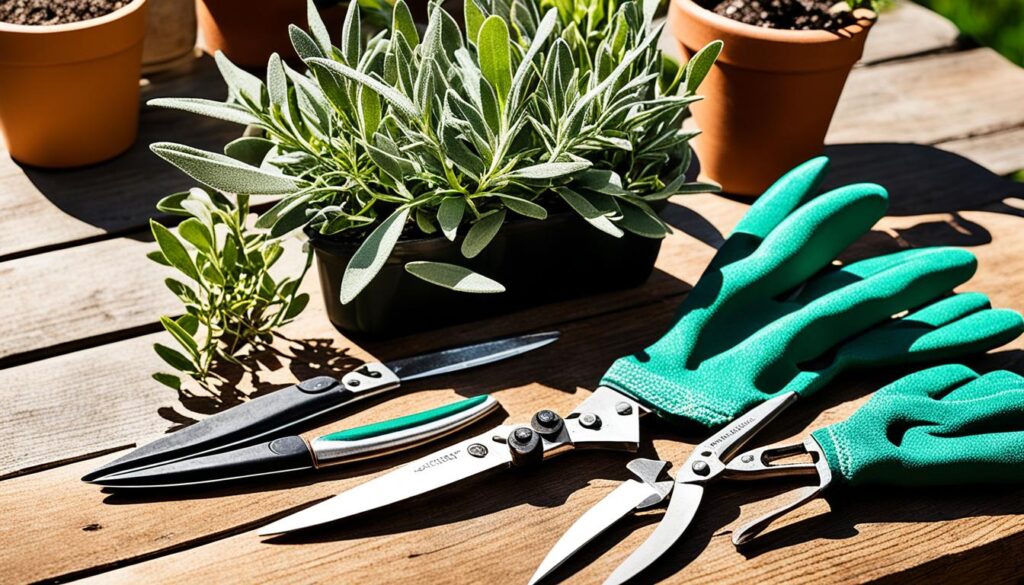
how to prune a sage plant
Identifying Nodes and Pruning Technique
Pruning a sage plant is a delicate process. With the right technique, you can make your herb lush and full. The key is to find the nodes on the stems. These are where new growth starts.
Nodes are where leaves meet the stem. When pruning, cut just above these nodes, about a quarter-inch up. This tells the plant to grow new, bushy growth from those nodes. Cutting above the nodes makes your sage fuller and more compact.
- Identify the nodes on your sage plant’s stems
- Make clean cuts about a quarter-inch above each node
- This pruning method encourages the plant to grow out, not up
Proper pruning of sage plants changes everything. By focusing on nodes and cutting above them, you get a sage pruning method that turns a lanky plant into a vibrant, bushy sage. Watch the nodes on the sage plant and prune right for the best look.
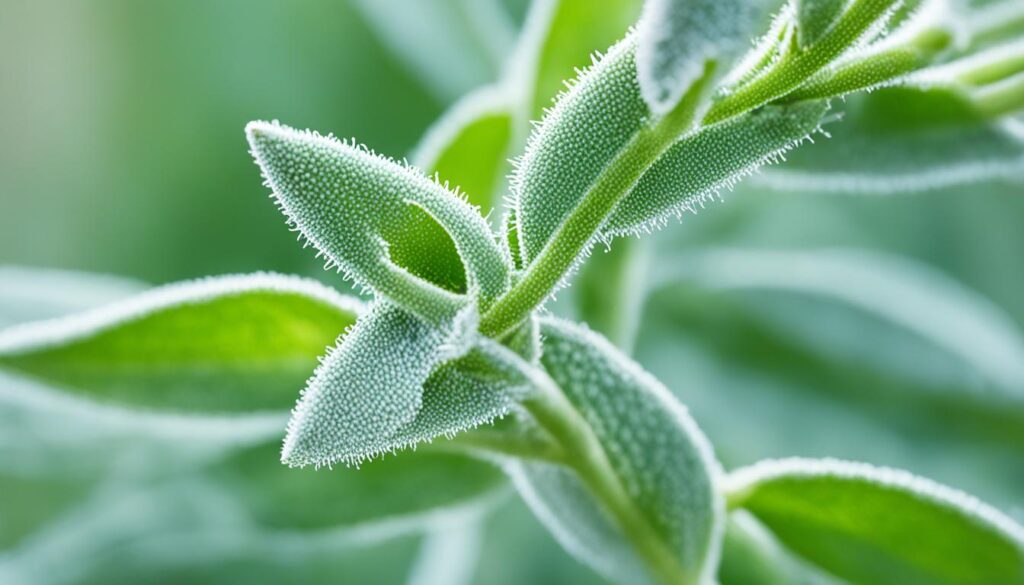
“Trimming right above the nodes can transform your sage from a lanky, awkward teenager into a confident, full-figured shrub.”
Pruning for Plant Health
Pruning your Common Sage is more than just tidying up. It’s a key health check-up. By pruning regularly, you boost airflow and sunlight around the plant. This helps prevent disease. It’s crucial to cut off dead or woody stems to keep your sage healthy and in check.
Removing Dead or Woody Stems
When you prune your sage, cut just above leaf nodes to encourage new growth. After pruning, give your sage some extra care with water and nutrients. This simple routine will keep your sage healthy and productive for many years.
- Prune sage plants in late winter or early spring, about 6-10 weeks before the last expected frost
- Cut stems back to a height of 6 inches to encourage new growth
- Identify and remove any dead, woody, or damaged stems
- Prune just above leaf nodes to promote bushier, more vigorous plants
- Water and fertilize sage plants after pruning to support regrowth
Proper pruning sage for health is key to sage plant maintenance. It keeps your plants looking great. By removing dead or woody stems from sage, your plants will keep thriving and give you a bountiful harvest every year.
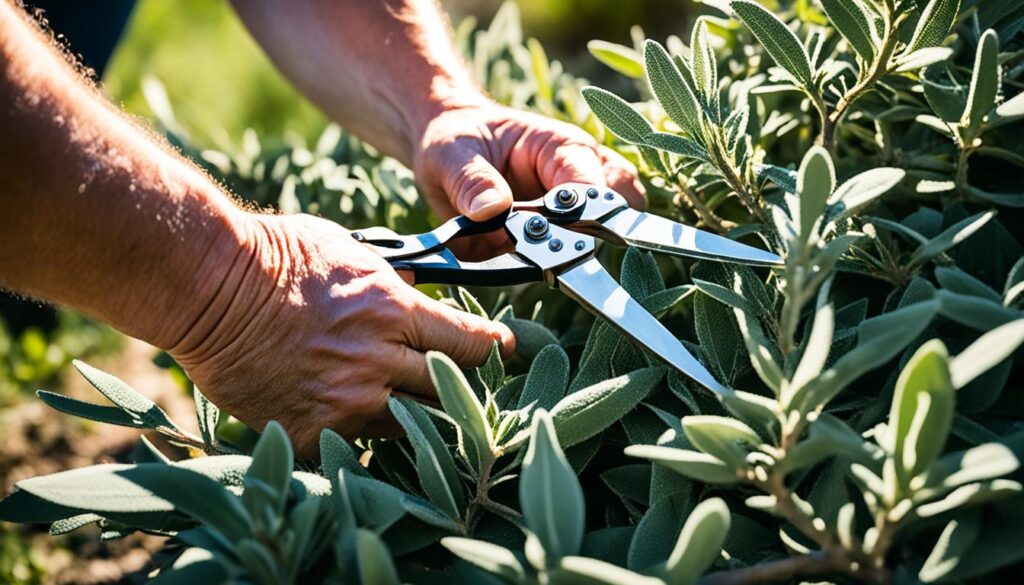
“Only the most organized gardeners dead-head sage plants as soon as the flowers fade in June.”
Conclusion
Pruning your Common Sage is not just about cutting a lot. It’s about cutting just the right amount. This ensures you get lots of leaves for cooking and medicine. Remember, it’s a slow process that requires focus.
When pruning sage, be strategic and don’t cut too much. This helps keep your plant healthy and long-lived. By pruning at the right times and in the right ways, your sage will grow well and give you lots of harvests.
Pruning is key to keeping your sage in top shape. It helps you know when and how to cut for the best results. With this knowledge, you can make your sage plant look great and use it in many recipes.
FAQ
When is the best time to prune my sage plant?
Prune your sage plant in early spring when new growth starts. This helps remove dead or woody stems and encourages healthy growth.
How do I know where to make the pruning cuts?
Look for nodes on the stem where leaves attach. Cut just above these points, about a quarter-inch up, to help the plant grow fuller and bushier.
What tools do I need for pruning sage?
Use sharp, clean pruning shears or scissors for sage. Choose bypass pruning shears for clean cuts that help the plant heal quickly. Always disinfect your tools before and after use to stop diseases from spreading.
Why is pruning sage important for its health?
Pruning sage is key for its health. It helps with growth, flavor, and disease prevention. It also improves air flow, sun exposure, and removes dead stems, rejuvenating the plant.
Can I prune my sage plant more than once a year?
Yes, prune your sage plant twice a year – in early spring and again in late summer or early fall after it flowers. Pruning too late can make your sage more prone to diseases.
